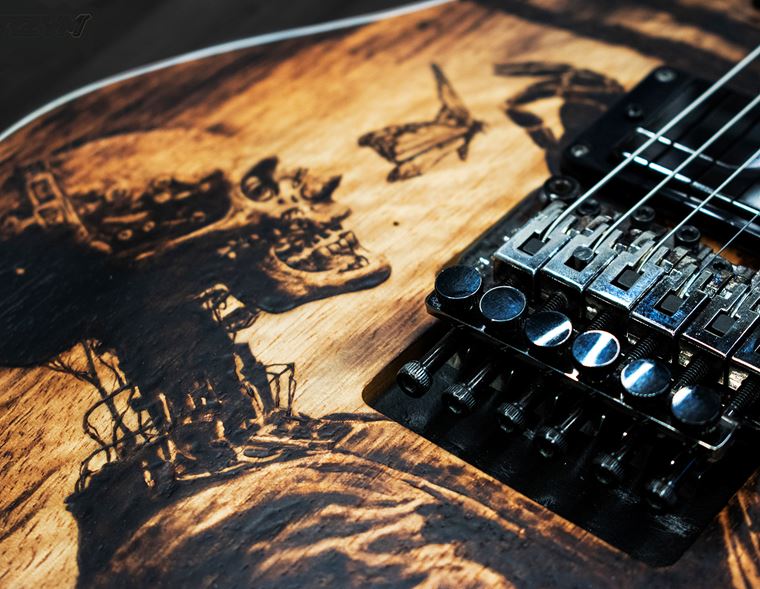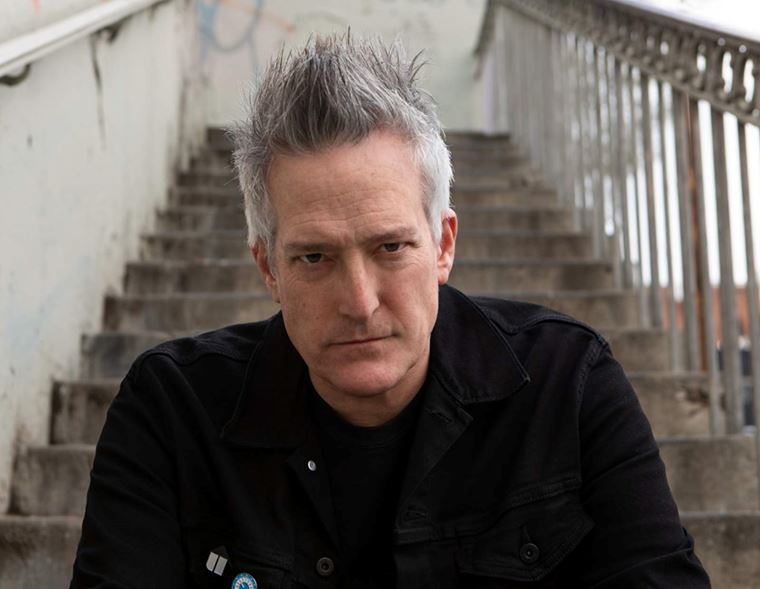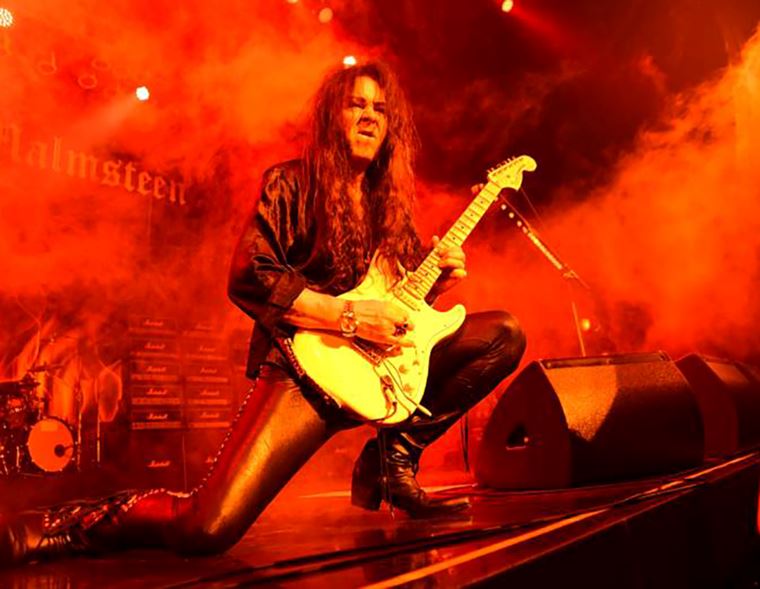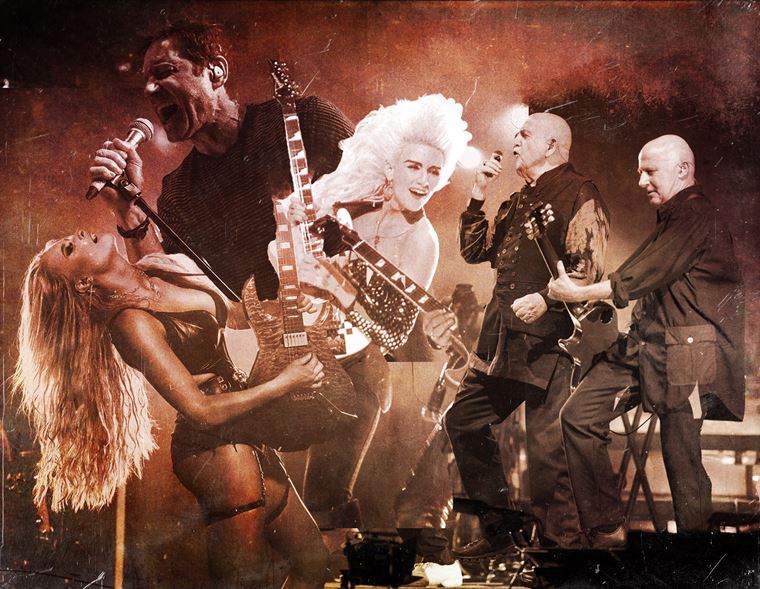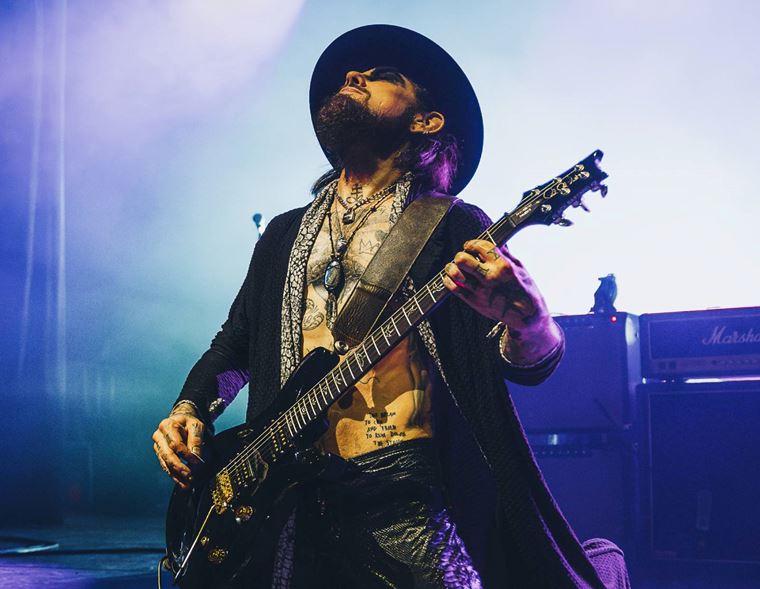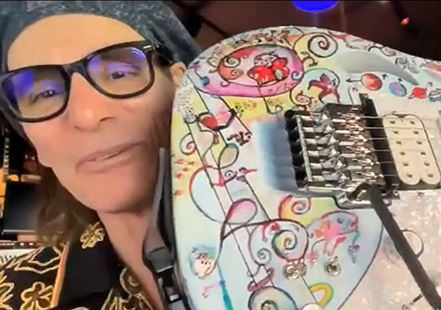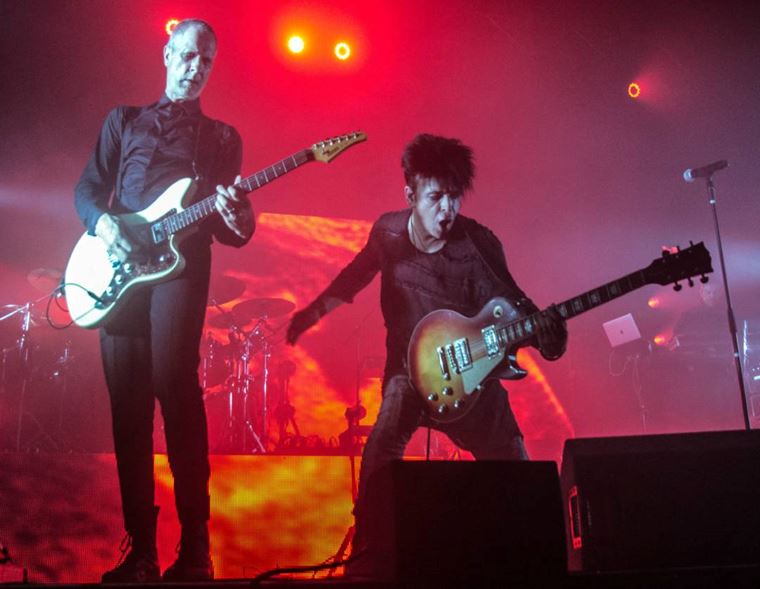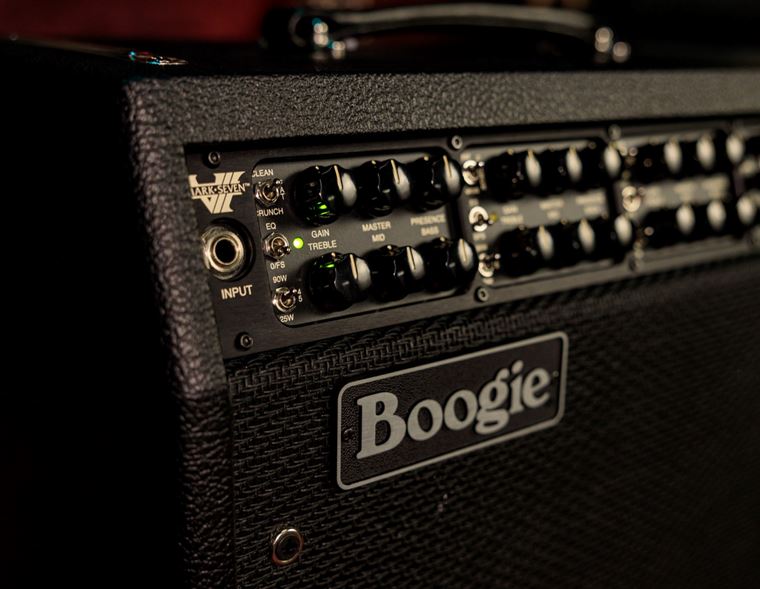SAMANTHA FISH talks Deathwish Blues! EXCLUSIVE Interview
Two swaggering gangster types, clad in shades and biker jackets, sass their way into a convertible and drive off like a modern day Bonnie & Clyde, off to commit goodness knows what sort of epic crimes. It’s like two characters from a Tarantino movie have jumped out of the screen and into ‘real life’. Whatever’s going on, we’re into it!
Who are these two? Why, it’s none other than Samantha Fish and Jesse Dayton! These alternative blues legends make a fine artistic pairing, and their new record, Death Wish Blues, is their second collaborative work. Featuring a host of new tunes written, duetted and duelled by both parties, it’s a hot slice of raw blues and rock that tips its head to the slightly ‘badder’ side of life.
Samantha has been a friend of guitarguitar’s since we spoke back in 2020, so we thought it was high time we caught up with her to get the lowdown on how this lean, mean collaboration came to be. We caught up earlier in the Spring, and learned all about their policy of sharing leads, their collaborative writing process, their room full of amps and the magical place in Woodstock where they decamped to record. Here it is, folks…
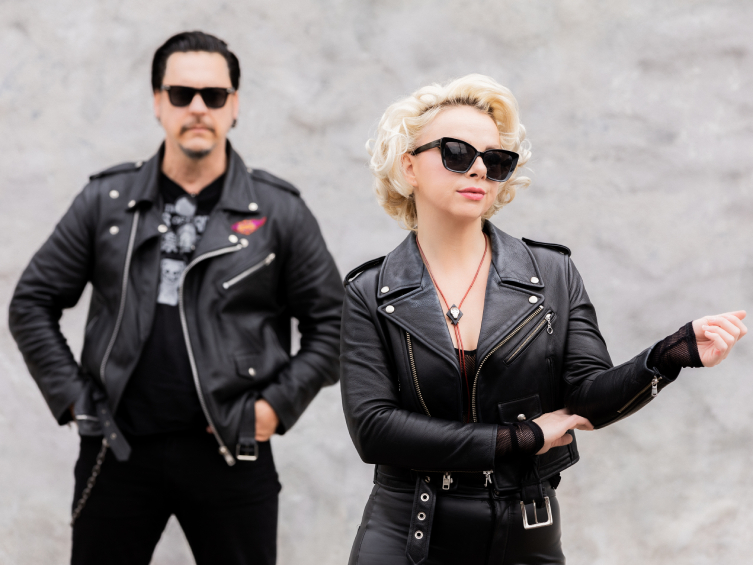
(Photo: Kaelan Borowsky)
guitarguitar: So, we haven’t chatted since mid-way through 2020 and now you have this new record with Jesse Dayton. So, I suppose for the sake of storytelling, how did you and Jesse first meet up together?
Samantha Fish: Well, I’ve known Jesse for about ten years, maybe more. We met when I was a teenager, coming up in Kansas City. His band would come through and play a show at this local club, so I’d see him maybe once a year. So, we kinda knew about each other, as musicians know each other, like keeping an eye on social media, supporting from a distance and stuff.
He came through New Orleans last year when I was off, and I’d gone to see him. Prior to going to see his show, for a couple of years my manager and I had been discussing the prospect of doing a side project - a kinda concept record - with a very specific style and aesthetic. It was just about finding the right person or partner to take it on. When I saw Jesse, it just kinda clicked: I thought he’d be a great person to take on this endeavour, so we just started talking.
It was a pretty slow, organic rollout where we both decided to start co-writing together. We cut an EP of cover songs of, like, Townes Van Zant and the Clash, and we released that in December under the name Stardust Sessions. Then we recorded a full-length album, and here we are!
GG: Excellent! Ok, cool. So, I’m interested in how the actual collaborative process worked. Last time we spoke about collabs, you said you would sometimes do it via email, and sometimes you would be sitting in the room with the person. How did it work this time round?
SF: Well, a little bit of both, you know? We met up in May to sit down and cowrite, but it was kinda like our first time sitting down and getting to know each other so we didn’t come up with too much! We were playing guitar, talking about influences, and then we ended up doing that EP. So, once we realised we wanted to take on the album, we kinda had a little bit of a deadline looming, like: if we wanna get it out by this time, we need to go and have it recorded by this time, so we realised we’ve gotta start working!
We worked our asses off for several months, calling each other up, sending ideas over the phone, recording little bits here and there, and just kinda shooting stuff back and forth. We’d even write on Zoom like this, you know?

(Photo: Daniel Sanda)
GG: Wow, that’s cool! Very handy too. So, both of you would sort of come to the table with ideas. Would you bring a completed song? Or would it be like a piece, like a melody or progression? And then, how would Jesse get involved with one of your songs?
SF: It depended on the song: there were a couple where Jesse would come through with a fully conceived idea that didn’t require my input, and vice versa. I wrote a couple of songs on my own, and I worked with another writer too, named Jim McCormick. We would work on songs and I might send them over to Jesse. He’d go ‘great, it fits!’, but a lot of times if we were going to co-write something together, like Deathwish for instance - that was the first single that came out - I had this idea for a melody and a chord progression, and a little top hook (sings the melody), and I had the hook line: ‘your kiss is like a deathwish’, you know? So I wanted to build something off of this, like a relationship song. He ended up coming up with the scenario, like, in the verses. He sent those back to me and we’d start finessing the chorus together. That was like a true collaboration in that way, where we’d just chip away at it bit by bit until we felt it was perfected.
Then we took it to the studio with Jon Spencer and he put his stamp on it, and we’d go in and record it!
GG: Awesome! It is always a strange thing to have to answer or explain, that type of process. From the point of view of the listener, the song just arrives to us, but there are so many paths that the song could have taken to get there. You mentioned about the overall concept, too. I was getting a real Tarantino/Bonnie and Clyde vibe: am I on the correct path there?
SF: Yeah, absolutely. I was pretty inspired working with Jesse because he’s a pretty deep artist in a lot of way. He’s got a depth to his work beyond the band and his songs. There’s the bands he’s collaborated with and been a part of, like The Misfits, Danzig, X and then further than that, he has a background in cinema, so I was inspired by that. I wanted to write songs that felt cinematic, you know? And really, the stories we’re telling in these songs, as we were recording, it was really cool because I wasn’t just hearing the songs, I could visualise them, these cinematic themes throughout the album. We had a pretty visceral aesthetic.
GG: Yeah, definitely! In the process of sharing parts of songs, and shaping & finishing them, were there even moments in the collaborative process when you had to fight for a part that you wanted to include or keep?
SF: Um, you know, there’s checks and balances to it. For me, I felt the collaboration to be freeing. I might fight for something a little more when it’s solely my name on the album. I’ve been in situations where, when a song wasn’t going where I thought it was supposed to, I fought to change it because it was under my name and so it represents me.
When you’re doing something collaborative, it sort of takes that weight off. It doesn’t have to represent everything you are as an artist because it’s truly collaborative: you’re sharing something with someone. If I really disagreed with an idea - and I can’t really think of one off the top of my head because we were pretty respectful of each other - but we’d either talk about it and try to figure a way around it or drop it. There was automatically this kind of respect in place, butI think both of us were just kind of open to this idea of collaboration. If one of us was really into an idea, it kind of made it easier to go: ‘okay, it’s not 100% my thing so let’s just roll with it and see what happens’.
GG: There’s that little area in between each artist’s own preference where I suppose you’re exploring new ground.
SF: Totally. It gives you some freedom, in a way.
GG: Yeah. Now, here’s a question I wondered about. It’s a simple one, but maybe still interesting. Did you ever write songs and then think to yourself ‘maybe this is one that Jesse should sing’ and did he maybe ever do the same?
SF: Totally, yeah! (laughs) A lot of these songs were duets, so we wrote them with these particular characters and parts in mind. That’s kinda cool, to approach things that way when you’re writing for somebody else, which I’ve never really had the opportunity to do before. It adds an extra layer to your writing, to your approach.
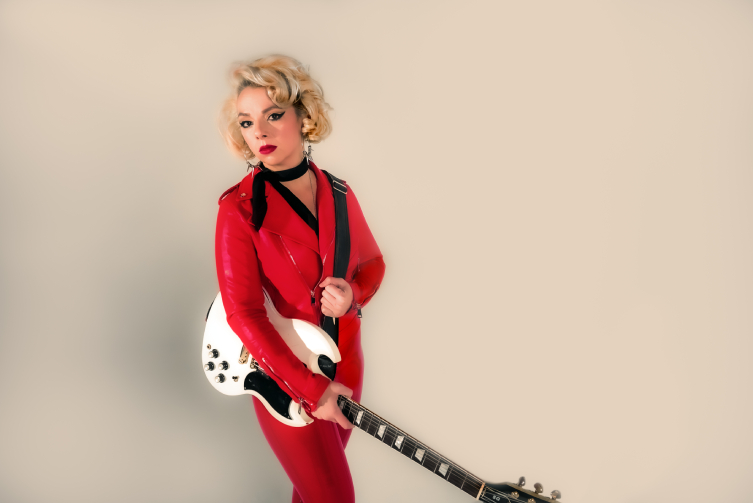
(Photo: Daniel Sanda)
But we never had any massive disagreements about which parts should be sung. We wrote a song together called ‘You Know My Heart’ and when we were in the studio, he was just nailing the main melody line of the choruses. When we originally wrote the song, we decided to both come out and sing the chorus strong, together, but it was pretty obvious that it was so in his wheelhouse that he should take on the main melody and I should do support. That happens, when you just assess the strong suit.
GG: Yeah, for sure! And of course, both of you are very accomplished guitar players. How did you sort out who played what on any given song?
SF: Well it was our goal from the beginning of this to make everything beautifully even. We didn't wanna be sitting at the end of a session going, ‘Oh man, we have a record that’s great but Jesse played all the leads!’ Or, ‘Samantha sang all the songs’, you know? So, we set out to make sure that that wouldn’t happen. I know this doesn’t sound very rock n roll, but we just carefully went through the songs and went, ‘okay, you do a lead here, I’ll do a lead there’, just to make sure everything felt pretty even and that we both felt represented.
GG: There are loads of really complimentary tones and textures throughout the record. Was it about you both having distinct identities with the guitar playing, or was there that ‘third thing’ that can exist when the two are blended?
SF: We both have pretty unique voices on the guitar, so it was important for both of us to be represented in that way. But, at the end of the day, the song is the most important thing that we need to serve. You’re trying to make good music and good songs, so it’s less about any ego thing. There’s some songs where I lay back a little more on the guitar, and then songs where he lays back a little more. You both kinda know where our strong suits are in our playing, we could listen to the songs and think: ‘this is perfect for a rippin’ Jesse solo’, or ‘this is perfect for a Samantha slide’ or something, you know what I mean?
GG: I do!
SF: And we had a great producer, Jon Spencer, who did an amazing job helping us navigate, because it can be complicated with two lead artists. I think he and I both have a big respect for each other, so it really wasn’t that difficult.
GG: No, that’s cool. And, like, I was just thinking that you both might have thought of interesting things to say at the same moment in a song, but then trust is a thing when you respect someone else’s artistry, right? Maybe that overrides those moments, right?
SF: Yeah, but you know, we didn’t really have that situation come up where we both were like, ‘oh my god, I have something I need to say right now!’ That was the great thing about having Jon: we’d go, ‘hey, what do you think about this?’, and he’d go ‘we need to have you do this right now here’, or ‘this is a jesse baritone solo, not a Samantha guitar solo’. We had a third party to help navigate that, but honestly, if one of us got excited about doing a solo, the other one was just like, ‘fuck yeah, go for it!’ If you’re feeling it, make it happen! Worst case scenario, we can both cut it, and they can chop it up in post. (laughs)
What Guitar Does Samantha Fish Use?
GG: Yeah, definitely! So, talking about guitars, last time we spoke, you hadn’t long since bought your lovely white SG. I saw that pop up in the Deathwish video. So, let's talk a little about the gear! What did you use for the record?

(Photo courtesy of Samantha Fish)
SF: Well, my SG was a heavy, prominent player on the record. Jesse played his custom made King guitar, I think he said it’s a prototype? It’s this beautiful hollowbody that he plays. I’ve got my lil’ slick SG with the humbuckers, he’s got this big massive hollowbody. I also have my cigar box guitar, which didn’t feature on the last record: we just didn’t have a place for it, so I definitely wanted to give it a moment and a feature on this album. It gets played a couple of times, actually.
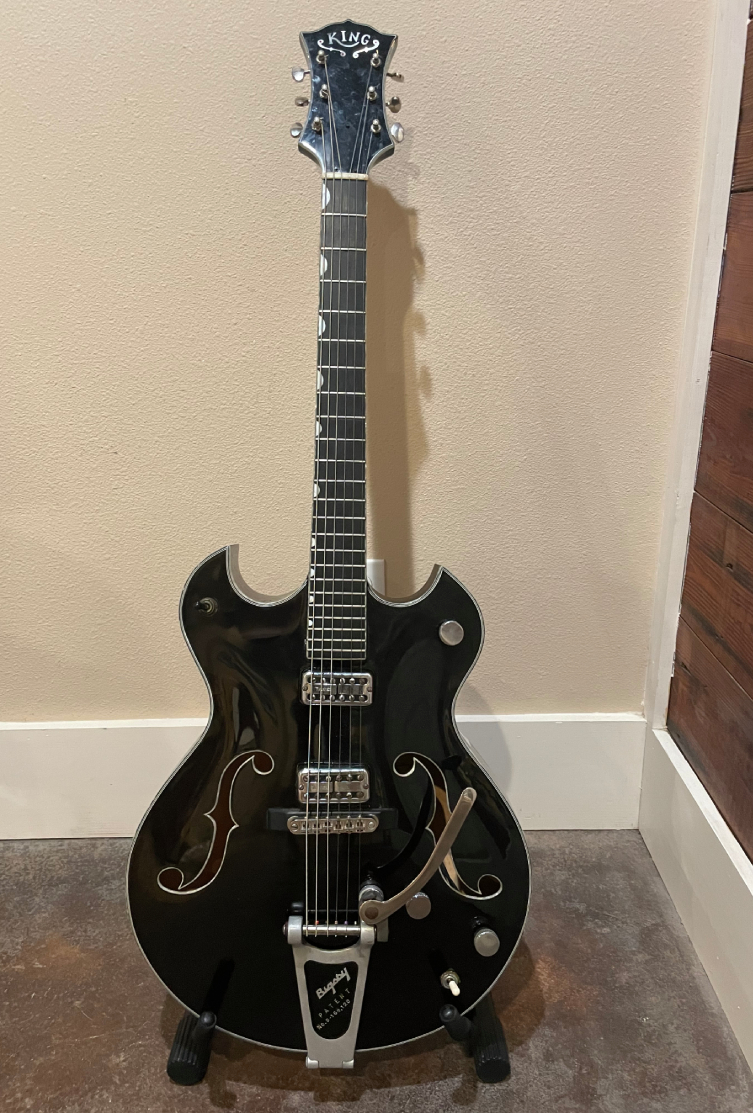
(Photo courtesy of Samantha Fish)
So the really cool thing about the studio was, we couldn’t bring in much stuff of our own because we flew up there. Jon brought up a baritone guitar, he brought in some nice acoustics, I played a Silvertone at one point in time: those are Danelectros, right?
GG: Indeed, yeah. Super cool.
SF: And then the amps were pretty spectacular: just a room full of cool little crazy amps. We played through a couple of vintage tweed Fender Deluxes, a K amplifier Kustom 200 head, so I actually tried my hand at solid state for the first time in a very long time! (laughs) They brought in this Magnatone 15 which had this beautiful tremolo and just sounded crazy fucked up and cool. They had an Airline amplifier…I did a lot of rhythm playing through a uh, (laughs) deconstructed PA system they used to use at the Woodstock Elementary School…
GG: Oh wow!
SF: I know it sounds kinda weird but it sounded really, really cool!
GG: What a cool thing to do!
SF: Haha, yeah! Well, we were in Woodstock, New York, home of a lot of important musical history that’s gone on up there. The studio we were at was called Applehead and Rick Danko (from The Band) used to live in the house behind it, The Big Pink (famous location of Dylan’s Basement Tapes recording and The Band’s Music from the Big Pink) was right up the road, so we were pretty inspired!
We had these old amps, like Supros. The amps did all the talking. We really kept the guitar selection very limited in a way, very simple, and then we just switched up amps.
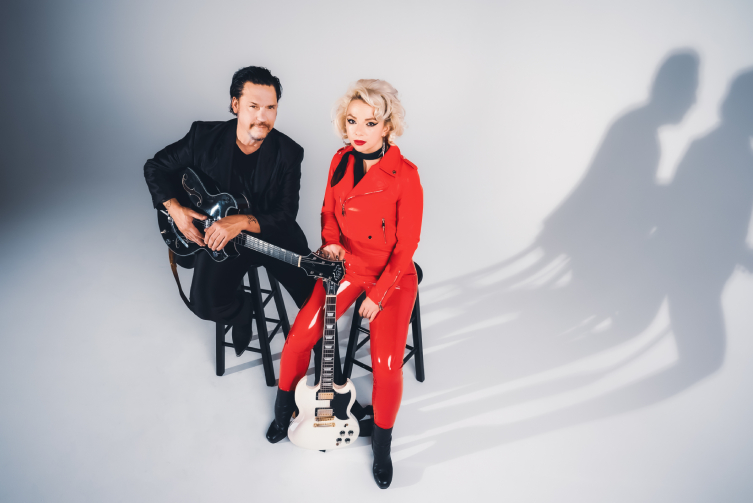
(Photo: Daniel Sanda)
What Gear Does Samantha Fish Use?
GG: There are some awesome tones of the record for sure. I didn’t realise you were recording up there in Woodstock. Just before we get to that, there are some amazing fuzzy tones and textures on the album, and I know you’re fond of your pedals, but was a lot of that actually the amps you were mentioning?
SF: I mean I had my pedalboard with me, but a lot of it was just cranking up the weird amps and playing clean. My pedalboard is naturally like…in a live setting it works fine but in the studio it’s like, ‘man, this thing fuzzes a lot!’ (laughs) So sometimes just going straight through just sounds better; you can crank those amps up all the way. I did use some fuzzes: I had a JHS Mini Foot fuzz, and I definitely used one of Jon’s fuzz pedals called a Katana Sound.
GG: Excellent. Because the area that you recorded in is so mythical for music, did you have all of your material written prior to going there, or did Woodstock help inspire some of the songs?
SF: We didn't have everything totally written but we were mostly there. It was funny, we were heading there and we had a couple of songs we had to finish up but I kinda knew that once we got up there, we were gonna feel fully inspired. We weren’t completely finished with the songwriting process but once we got up there, we knew exactly what we had to do. We did Riders, we did Dangerous People and we did Supadupabad in the studio.
GG: Nice one! Now, you came to the UK last year and we’ll be seeing you again in October. Is that a solo thing or will Jesse be with you?
SF: I’m not sure! It’s kinda unclear to me right now if it’s me or the Jesse thing. I’m pretty sure it’s gonna be the Jesse tour…
GG: Oh cool!
SF: Again, I’m not 100% sure, I’m just kinda going by the seat of my pants right now, not to sound unprofessional, but things are moving very fast.
GG: Of all of the hundreds of people I’ve interviewed, you’re one of the least unprofessional people I’ve spoken to. I’m always inspired by how well you’ve got your shit together, so I won’t think that for a second.
SF: Alright, thanks man!
GG: All the best for the release, it’s a great record and it deserves to do well.
SF: Thanks Ray, I appreciate it, thank you!
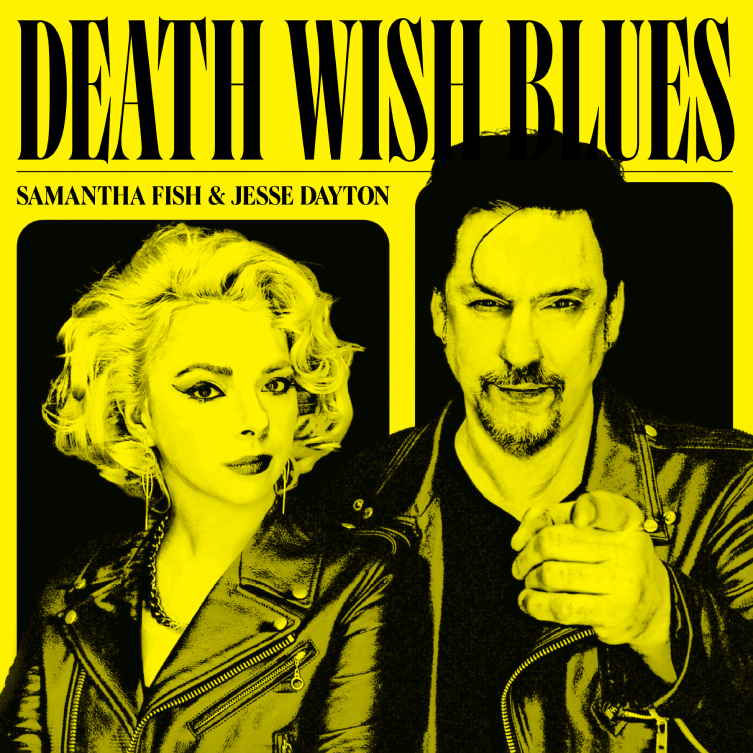
If you need some swaggering outlaw rock n roll in your life, keep an ear out for Samantha’s new record with Jesse Dayton. It’s called Death Wish Blues and it’s out on the 19th May on Rounder Records. Samantha is on tour later this year too, so head over to the official Samantha Fish website for info and links to all of the above goodness.
A big thanks goes out to Samantha for another excellent conversation! Thanks also to Peter for putting us in touch, and for yourself right there for taking the time out to read this here article. We hope you enjoyed it, and if you did, there’s a lot more where that came from! Click the button below to head to our Interviews page, where you’ll find all manner of exclusive interview pieces with legends such as Joe Bonamassa, Steve Vai and Andy Timmons, as well as Slipknot, Nine Inch Nails and Smashing Pumpkins!



